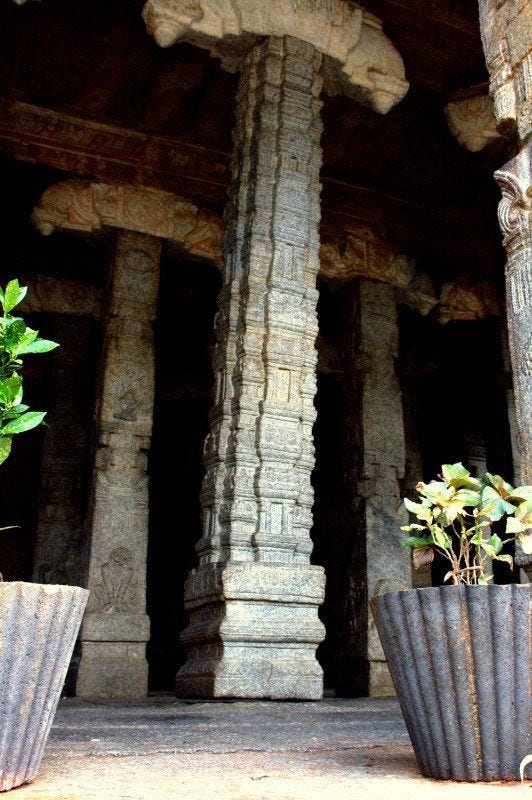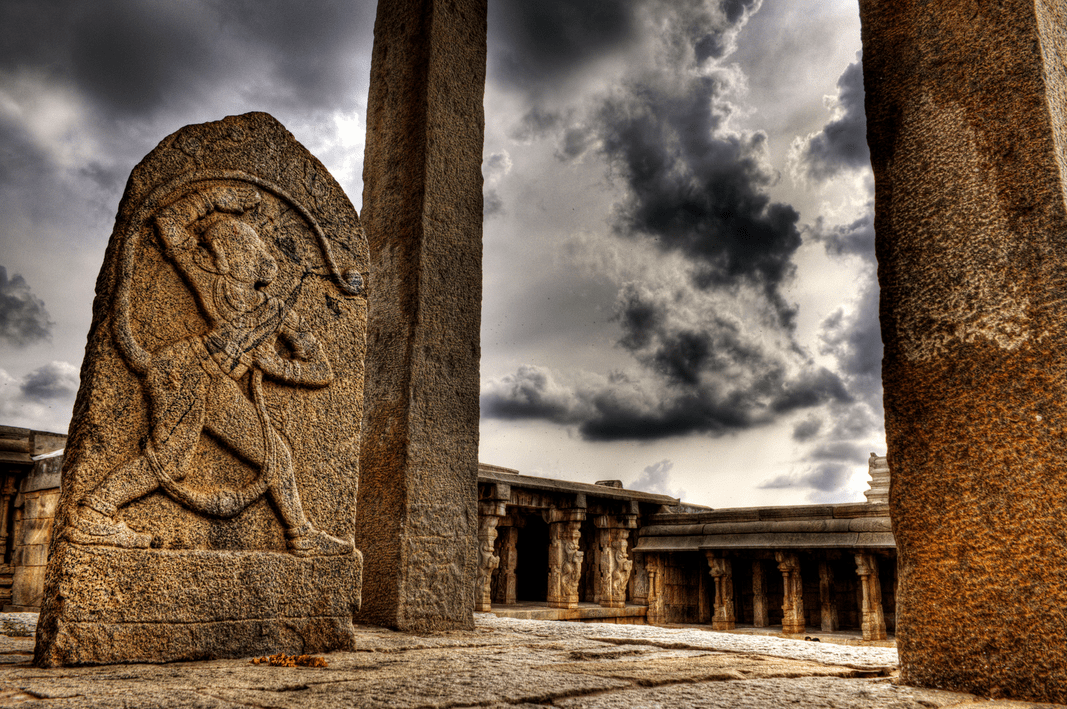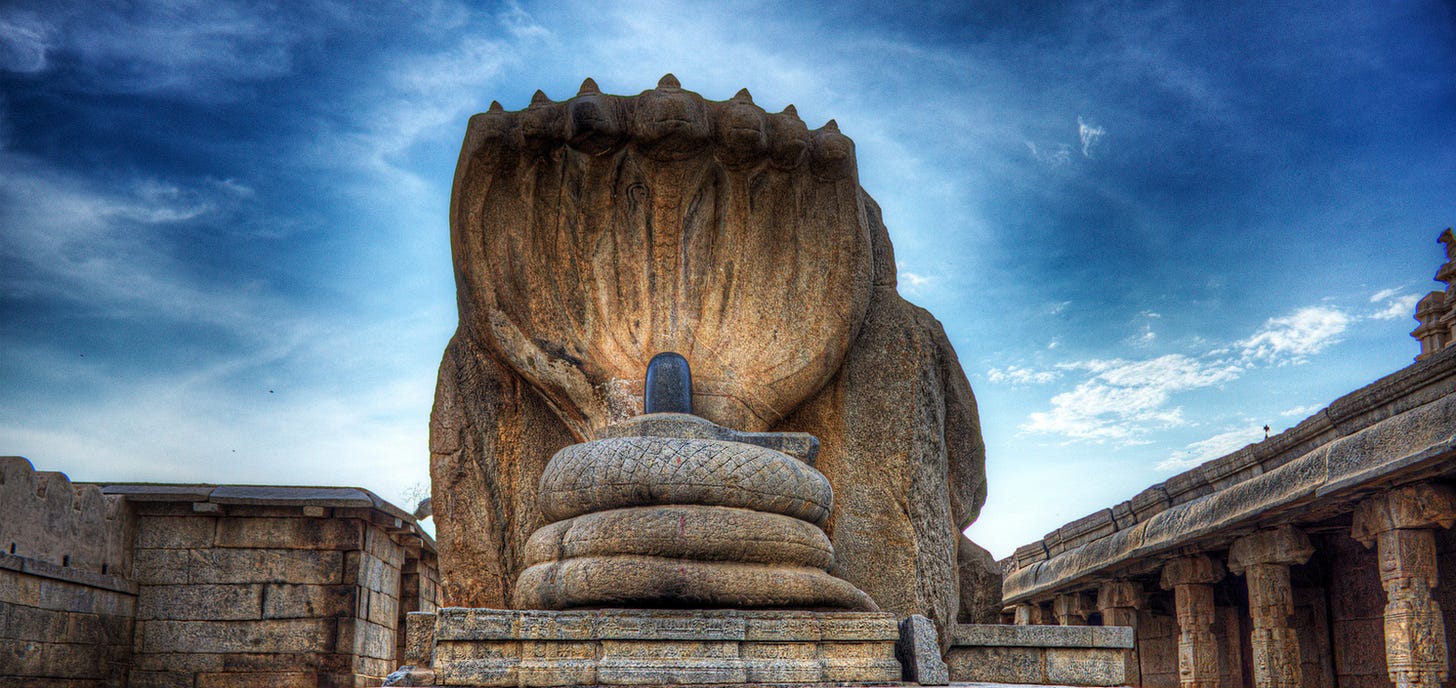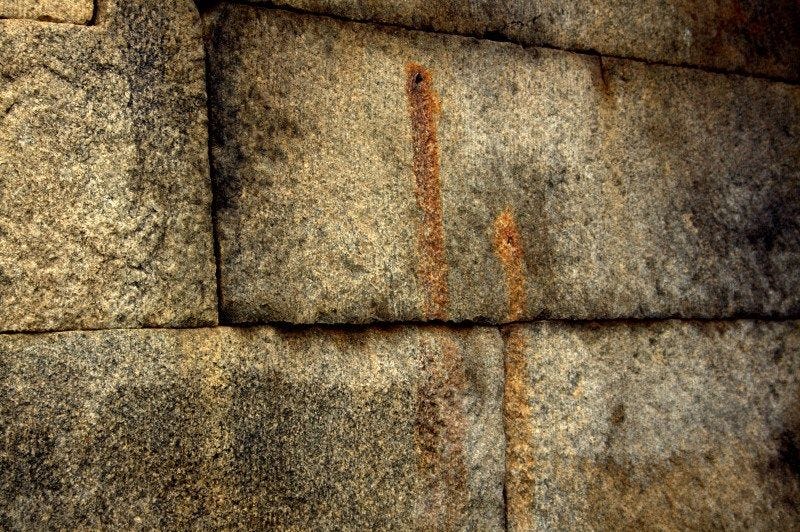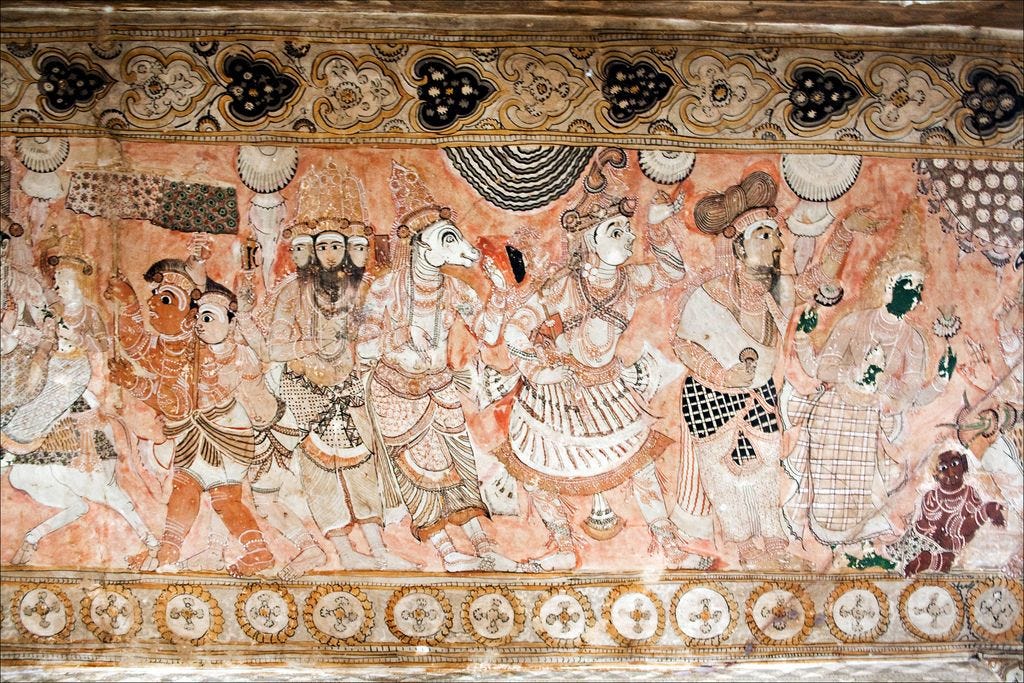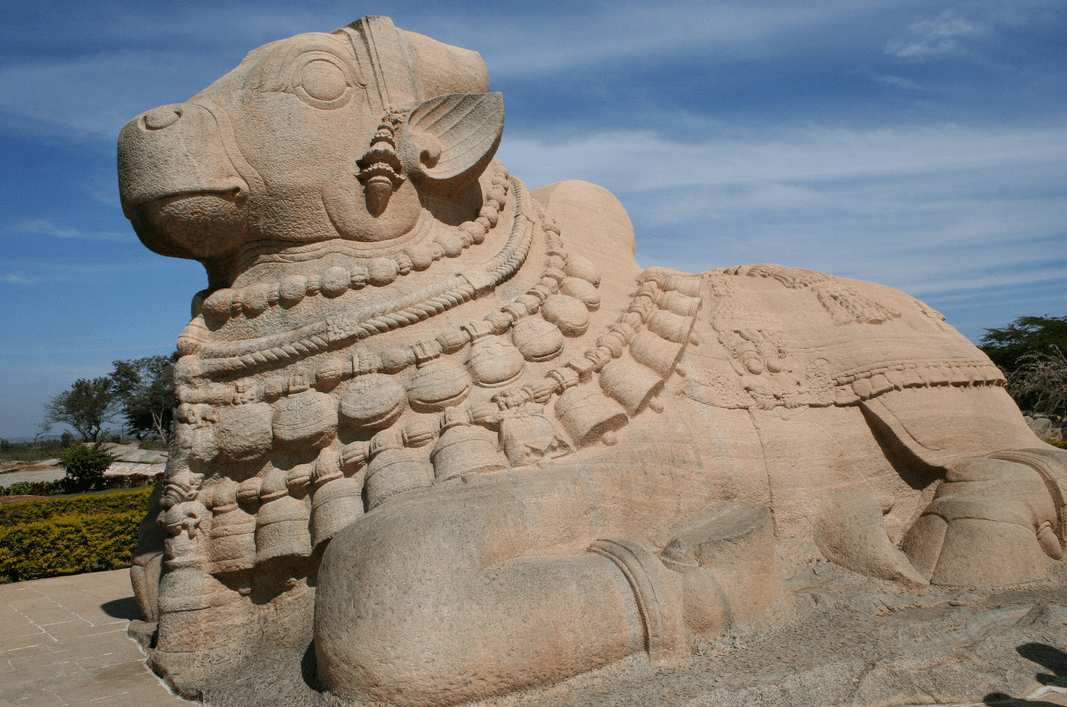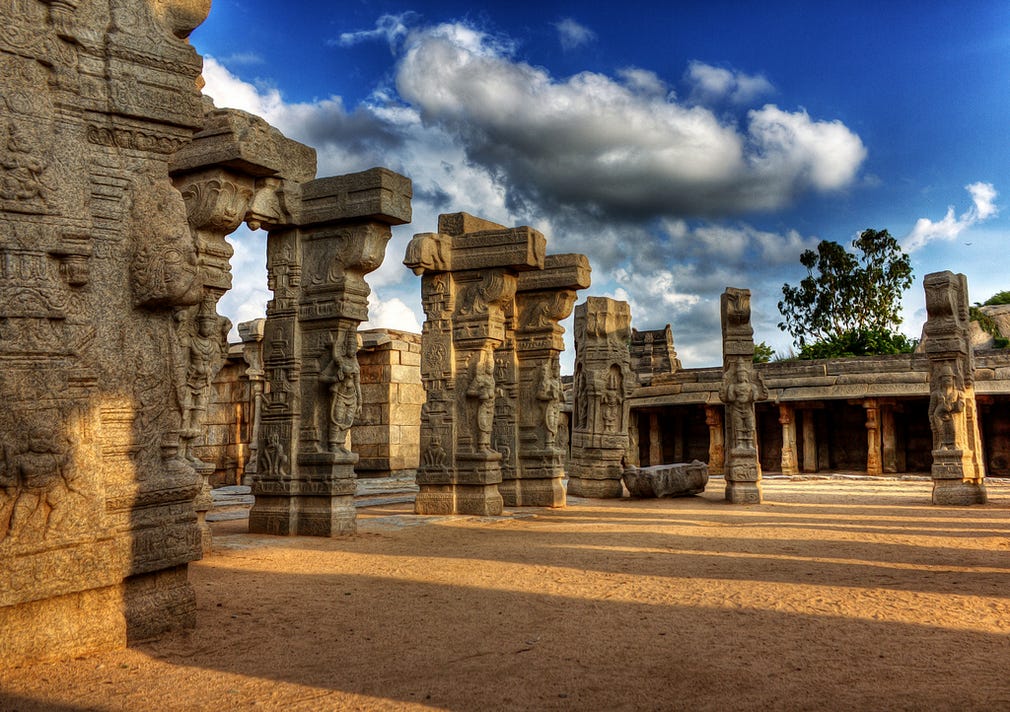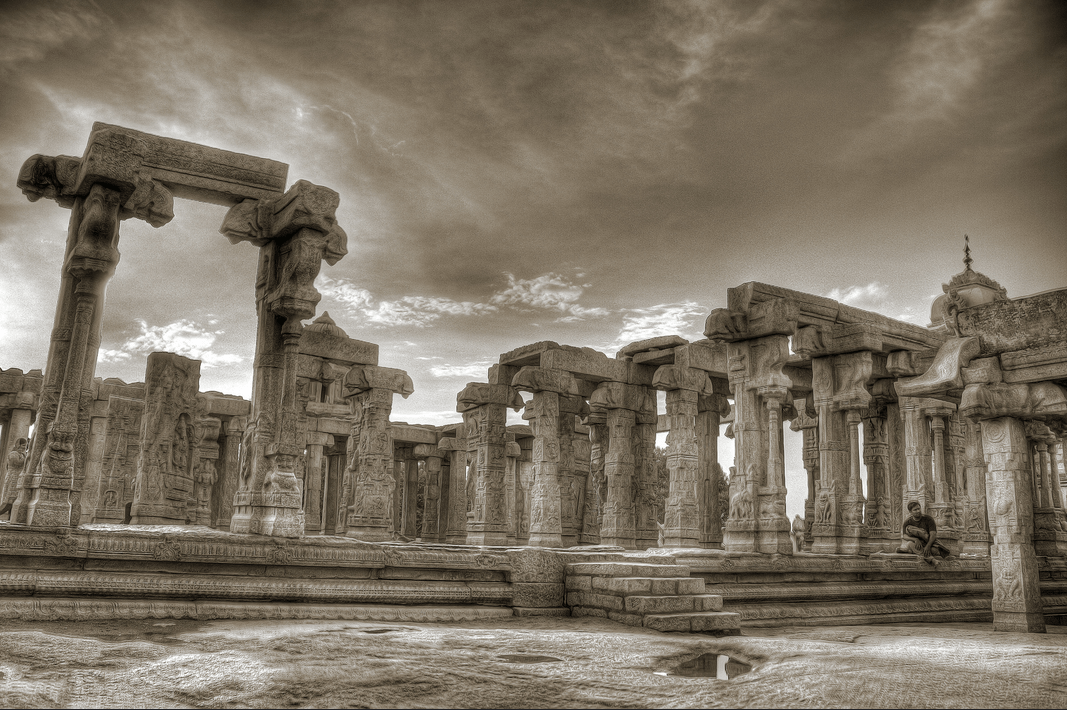Spiritual Destinations: Veerabhadra Temple, Lepakshi
I am starting a five set series of posts on being tagged by my beautiful and very talented wife, Archana, to write picture posts. This series is about the 5 spiritual places that I would like to visit with Archana. The first one is Veerbhadra Temple in Andhra Pradesh.
In Ramayana, when Ravan was taking Sita away to his Lanka, he was met with large Jatayu, who was old and weak but still fought against Ravan to free Sita. Unfortunately, he was no match for Ravan and was killed. The place where he fell, is the place where Andhra’s famous Veerbhadra temple has been built.
This temple has been consecrated by the one of the celebrated Sapta-rishis – Agastya Muni. Sage Agastya is the most important Yogi and Spiritual luminary when it comes to South. It is said that there isn’t any place in South that hasn’t been touched by him. The life style, the temples, the practices and Spiritual schools, everything has been inspired and established by Sage Agastya. That imprint is clearly visible here as well.
The Veerbhadra temple has been built on the rocky hill Kurmasailam — which means tortoise hill in Telugu, after the shape of the hill. It has idols of Ganesha, Nandi, Veerabhadra, Shiva, Bhadrakali, Vishnu and Lakshmi.
Why Lepakshi?
There are two theories as to why the temple is called Lepakshi.
The Jatayu Story:
When Ram saw Jatayu who was fatally injured, he looked at him compassionately and said “Le Pakshi” which means ‘rise, bird’ in Telugu.
Treasurer of Vijayanagar story:
The other story is of how the treasurer of the Vijaynagar empire used the kingdom treasury to build the temple while the king was away. The way he was punished for completely finishing off the treasury money on this temple. Virupanna, the treasurer had rebuilt the temple even though the original temple and Shiva Lingam had been consecrated by Agastya Muni himself. When the King came back from his campaign to find the treasury had been emptied by Virupanna, he ordered that the treasurer be blinded. Virupanna carried out his punishment himself. He dashed his eyes against the walls of the unfinished Kalyana Mandapa. They say that even today two dark red stains can be seen at the place where Virupanna lost his eyes. That is why it was called the village of Lepa-askshi.
Pillars: There are 70 large pillars in the temple and out of these there is one pillar that is the most incredible. It is the hanging with some distance between the pillar and the floor. In fact, it is pretty common for the guides to take a twig or a sheet of paper and pass them slowly under the pillar, so it comes out from the other side without any obstruction. It is said that during the British time, a British engineer who was amazed at the engineering marvel of the temple, tried to move the pillar to find out the secret of how it was supported. Unsuccessfully though.
The Nandi: Almost a mile from the temple, a 27 ft long and 15 ft high Nandi awaits you. This colossal Nandi is said to be world’s largest monolithic Nandi. The proportioned body, the ornaments and smooth contours make it a stunning display!
The Mandapas: The Veerbhadra Temple is composed of three separate Mandapas. The first one is the Mukhya Mandapa (or Natya or Ranga Mandapa. The second is Artha Mandapa and Garbha Griha and the third is Kalyana Mandapa. The last one is unfinished.
The Natya and Kalyana Mandapa shows many stories from the Puranas like ‘Ananthasayana‘, ‘Dattatreya‘, ‘Chaturmukha Bramha’, ‘Tumburu’, ‘Narada’ and ‘Rambha’.
The ceiling of Mukha Mandapa has Asia’s largest fresco of 23 by 13 feet (7.0 m × 4.0 m). The frescos on the ceiling show 14 avatars of Lord Shiva like Yogadakshinamurthy, Chandes Anugraha Murthy, Bhikshatana, Harihara, Ardhanarishwara, Kalyanasundara, Tripurantaka, Nataraja, Gouriprasadaka, Lingodhbava, Andhakasurasmahara etc.
Location
The location of the temple is very near the famed Spiritual town of Puttaparthi. The temple is just an hour’s drive from Puttaparthi. It is about 480 km from Hyderabad and about 130 km from Bangalore. Near this place we have two important apparel towns – Dharmavaram, the well-known silk weaving centre, and Hindupur and surrounding villages known for amazing cottons.
Image Sources: Featured, Bhringi, Nandi, Shiva Lingam and Snakes, Hanuman Idol, Kalyana Mandapa-Color, Kalyana Mandapa-B&W, Hanging Pillar and Blood Marks.





